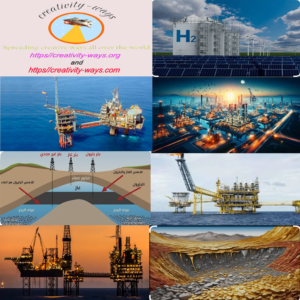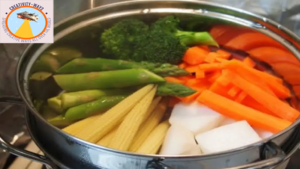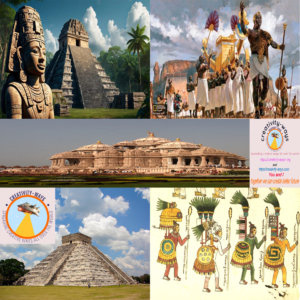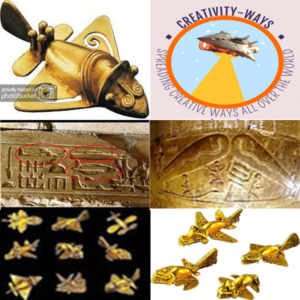Creative Ways to Extract Earth’s Wealths
Creative Ways to Extract Earth’s Wealths: A Comprehensive Guide
Earth’s natural resources are the foundation of modern civilization, providing materials essential for economic development, technological innovation, and sustainable progress. Creative Ways to Extract Earth’s Wealths is a platform designed to offer in-depth, accurate, and accessible information on how to harness the planet’s abundant resources in ways that benefit humanity while preserving environmental balance. This guide explores various types of natural wealths, modern extraction techniques, sustainable utilization methods, and investment opportunities, offering readers a thorough understanding of Earth’s valuable resources.
Main Sections of the Website:
Types of Natural Wealths:
Metals and Minerals: This section covers essential minerals like iron, copper, gold, and silver, alongside rare earth elements like lithium and cobalt. It details their economic significance and industrial applications. These materials are crucial for the production of electronics, construction materials, and renewable energy technologies, making them indispensable in the global economy. Additionally, precious stones like diamonds, rubies, and emeralds hold both economic and cultural value, fueling global markets in luxury and industry.
Oil and Gas: Comprehensive insights into global oil and gas reserves, modern exploration methods, and the sustainability challenges facing the industry. The site discusses traditional and innovative drilling techniques, the impact of oil and gas extraction on the environment, and future trends toward cleaner energy alternatives. This section also covers unconventional resources like shale oil and gas, offering an outlook on their growing significance.
Water Resources: Highlighting the importance of freshwater and saltwater resources, this section explores innovative techniques for sustainable water use. It addresses issues like water scarcity, pollution control, and advanced desalination technologies, ensuring long-term availability of this essential resource. Groundwater management and rainwater harvesting are also explored as vital strategies for water conservation.
Agricultural Resources: This category covers soil fertility, crop production, and sustainable farming practices. It emphasizes the importance of balancing food security with environmental conservation, showcasing modern techniques like hydroponics, vertical farming, and permaculture. Genetic innovation in agriculture, like drought-resistant crops and bioengineering, also plays a critical role in maximizing agricultural wealth.
Forestry Resources: Forests provide timber, medicinal plants, and biodiversity essential for ecological balance. This section covers sustainable logging practices, forest conservation, and the economic impact of forest products like paper, rubber, and essential oils. The importance of non-timber forest products in supporting local economies and conservation efforts is also discussed.
Marine Resources: The oceans are a wealth of resources, including fish, seaweed, and minerals. Sustainable fishing practices, aquaculture, and the extraction of deep-sea minerals are examined here. The potential of marine biotechnology and the development of pharmaceuticals from oceanic organisms present emerging opportunities in this field.
Renewable Energy Sources: A deep dive into solar, wind, and geothermal energy, exploring how these resources can be harnessed efficiently. The section also examines the latest innovations in energy storage and grid management. Hydropower and bioenergy also play a crucial role in diversifying the renewable energy mix.
Biodiversity: The wealth of genetic resources found in Earth’s diverse ecosystems plays a crucial role in agriculture, medicine, and environmental stability. This section discusses conservation efforts, the economic value of biodiversity, and how preserving ecosystems can lead to sustainable development.
Atmospheric Resources: Elements like wind, solar radiation, and even atmospheric gases are vital natural wealths. This section explores technologies that harness these resources for energy, climate management, and industrial use.
Wealths Extraction Methods:
Modern Technologies: An overview of advanced extraction techniques, including horizontal drilling, hydraulic fracturing, and surface and underground mining. These methods increase efficiency, reduce waste, and minimize environmental impact. Innovations like automated drilling and drone-assisted surveys improve accuracy and safety.
Innovations and Development: Showcasing the role of artificial intelligence and robotics in improving efficiency and safety in extraction processes. The integration of smart technologies ensures precision and reduces human risk in dangerous environments. Blockchain technology is also emerging to ensure transparency in resource management.
Traditional Methods: Exploring time-tested techniques like manual mining and conventional drilling, understanding their historical significance and current applications. Indigenous knowledge and practices in resource management are also highlighted for their sustainability and efficiency. These methods have played a crucial role in the initial stages of resource extraction and continue to be relevant in small-scale operations worldwide.
Biological Extraction: Highlighting eco-friendly methods like phytomining and bioremediation, which use plants and microorganisms to extract and clean up valuable minerals. Biomining, using bacteria to leach metals from ores, presents an innovative and less invasive extraction method. These techniques not only reduce environmental impact but also open the door to more sustainable resource management.
Renewable Resource Utilization: Discussing methods for harnessing solar, wind, and geothermal power, including cutting-edge storage and distribution techniques. As the world shifts toward cleaner energy, these methods become increasingly vital for reducing dependency on fossil fuels and ensuring long-term energy security.
Marine and Aquatic Extraction: Techniques for sustainable fishing, aquaculture, and the responsible mining of oceanic minerals. This includes exploring deep-sea mining innovations and the development of marine biotechnology for pharmaceuticals and industrial applications. Balancing the economic benefits of marine resources with ecosystem preservation remains a priority.
Sustainable Utilization:
- Economic Development: Strategies for using natural resources to foster economic growth, illustrated by successful case studies from around the world. Examples include countries that have transformed resource wealths into long-term prosperity through effective governance and investment.
- Environmental Balance: Guidance on minimizing environmental impact through sustainable practices and regulatory compliance. This includes adopting cleaner technologies, reforestation efforts, and habitat restoration initiatives.
- Circular Economy: Promoting recycling and resource efficiency to reduce dependence on raw material extraction, supporting long-term sustainability. E-waste recycling and urban mining are examples of innovative approaches in this area.
- Community Engagement: Ensuring local communities benefit from resource extraction through fair employment practices, infrastructure development, and educational initiatives. Corporate social responsibility (CSR) programs play a crucial role in fostering positive community relations.
Reports and Studies:
- Case Studies: Detailed analyses of extraction projects worldwide, offering insights into their successes and challenges. These studies provide valuable lessons on balancing economic gain with environmental stewardship.
- Scientific Research: Summaries of the latest research in resource extraction and management. This includes breakthroughs in material science, environmental protection, and energy efficiency.
- Market Analysis: Comprehensive reports on global demand, pricing trends, and future projections for key natural resources.
Investment and Development:
- Investment Opportunities: Information on promising projects and future market trends in the extraction sector. The platform identifies high-potential regions and sectors poised for growth.
- Investor Guide: Practical advice on evaluating and selecting resource-based investment opportunities. It includes risk assessment, regulatory considerations, and sustainability factors.
- Partnership Models: Exploring collaborations between governments, private companies, and local communities to ensure equitable resource development.
Educational Resources:
- Educational Videos: A library of instructional content explaining extraction technologies and methods. These videos cater to different audiences, from industry professionals to curious learners.
- Webinars and Workshops: Interactive sessions featuring experts discussing best practices, emerging trends, and innovative solutions in resource management.
- E-Books and Articles: Comprehensive publications offering in-depth knowledge on various aspects of wealths extraction and utilization.
Website Objectives:
- Providing In-Depth Information: Delivering comprehensive knowledge to help individuals and businesses make informed decisions. The platform ensures content is well-researched, up-to-date, and accessible.
- Promoting Sustainability: Advocating for responsible resource management to ensure long-term ecological health. The site emphasizes the importance of balancing eco













